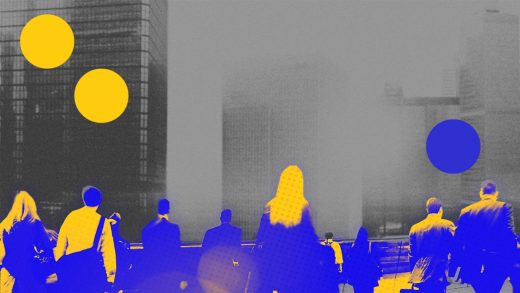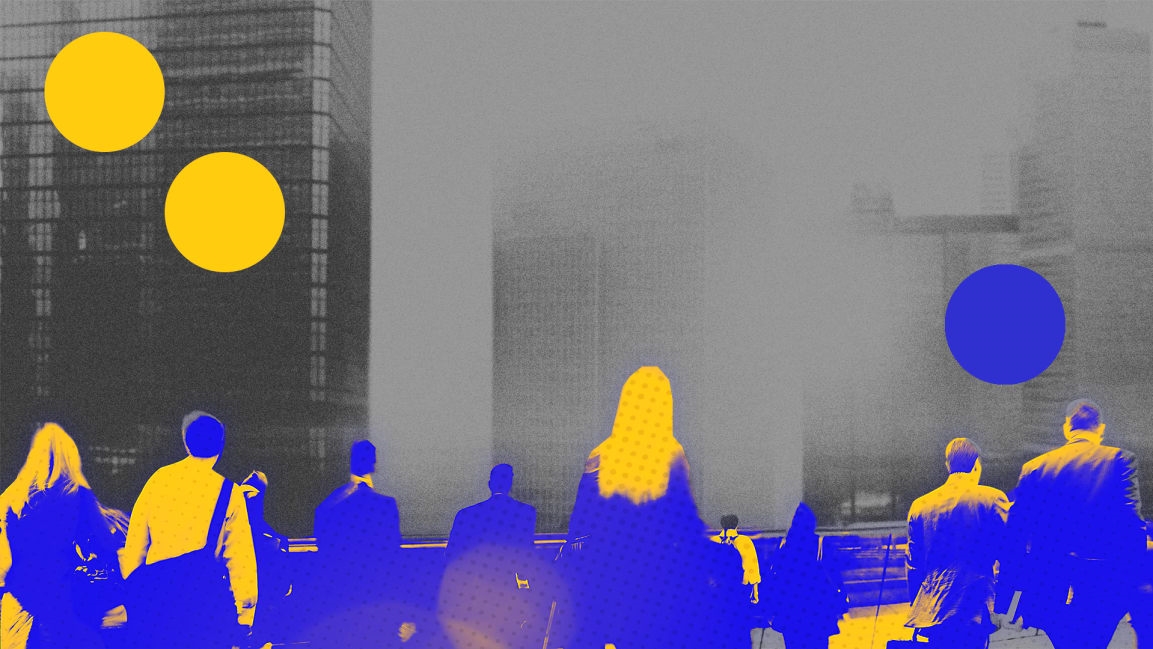How to ease the transition back to the office
Where we are is a mixed bag. In the mix is burnout from having our lives completely upended, yet still having to function at our jobs and in our personal lives. Working mothers are especially burdened, many forced to leave the workforce altogether. We’ve seen rising rates of loneliness, anxiety, depression, and substance abuse. Even beyond the pandemic, many are reeling from the trauma of racial and social violence and ongoing systemic injustice.
Yet also in the mix are positive elements. Some people have used the past year as a reboot, taking the extra time at home to reconnect with their families and focus on their own health and well-being. And thanks to the unprecedented video-cam window into one another’s lives, we’ve made a lot of progress (sometimes unintentional) in “bringing our authentic selves to work.”
Workers have also been empowered to exercise more choice in when and how they work. Long-standing organizational bureaucracies toppled as people and teams took charge, doing what they had to do to get work done. We’ve seen the power of technology to enable and augment human capabilities. We’ve learned the importance of setting boundaries to protect our own well-being by turning off the camera at times and taking breaks for personal or family time.
Now we’re looking ahead to a post-pandemic world, faced with figuring out where and how work—and we as workers—fit into it. We don’t know what the long-term effects of the past year might be. Is there anxiety about reentry? Of course, and on multiple fronts.
A critical crossroads
We’ve had a year to adjust to being at home. While that wasn’t ideal in all cases, we adapted. We’re going back to workplaces that won’t be the same as before. Familiar faces may be missing, familiar rituals changed or gone. We wonder: How do we stay safe traveling, on the streets, in the workplace? Can we adjust to dressing up and showing up? Do we even want to? Even people excited to return may still feel anxious about being in the office in person or traveling.
We’re at this critical crossroads where a transition to something is imminent. And it likely won’t be a return to work and workplaces as we knew them before.
So, how can leaders help calm reentry anxiety, enhance worker well-being, and carry the organization forward? For help, we look to the Global Human Capital Trends that Deloitte has been tracking for more than a decade—specifically, recent trends in belonging and well-being.
Build belonging through shared purpose
Feeling connected to others and to a larger purpose goes a long way toward alleviating anxiety. A sense of belonging at work comes from three mutually reinforcing attributes: feeling comfortable, including being treated fairly and respected by colleagues; feeling connected to coworkers and teams; and feeling that you contribute to meaningful work outcomes and help your teams and organization achieve common goals.
To foster belonging, leaders should reinforce the why of work and what we’re all working toward while acknowledging that how we do it has changed and won’t be the same for everyone going forward. People and teams should have latitude and flexibility to learn what works for them in terms of on-site, remote, and hybrid arrangements. And as leaders acknowledge others’ feelings and needs, they should be up front about their own reentry hesitancies and struggles, and visible in setting boundaries.
Structure well-being into the flow of work
What if instead of causing anxiety, work were designed to help alleviate it? As workplaces are reconfigured for safety and well-being, the work itself should follow suit.
Think about what role your central workplace plays in how work gets done. Does it also have a role in fostering belonging and well-being? In our 2021 Trends research, 7 in 10 executives said their organization’s shift to remote work had a positive impact on well-being. How can your workplace support both work and well-being? We know technology has been essential to getting work done and keeping us connected while apart. Consider how it can also be used to promote well-being, such as apps that deliver pulse surveys to gauge workers’ mental state and engagement, or that provide on-demand access to well-being and mental health resources and strategies. Tap teams and workers themselves for lessons learned and ideas about ways to re-architect their work to maximize both well-being and performance.
Be intentional in planning for reentry and beyond
Few things generate more anxiety than stepping into the unknown or uncertain without a plan. The pandemic dramatically shifted organizations’ approach to preparedness. Planning for multiple scenarios—including unlikely, high-impact events—is now much more prevalent. Being able to prepare for, and then weather, disruption depends heavily on how you structure work and support workers to enable them to rise to the challenge.
Sure, the last year showed us that workers can be resilient and resourceful when they need to be, sometimes in spite of organizational norms. But the smarter path is to intentionally design work and work structures to give workers agency and choices in how they navigate work, both day-to-day and in new or trying situations. Doing so not only can help alleviate immediate anxiety, but also position workers and the organization to thrive, whatever the future holds.
Jen Fisher is the U.S. chief well-being officer at Deloitte Services and author of the forthcoming book, Work Better Together: How to Cultivate Strong Relationships to Maximize Well-Being and Boost Bottom Lines, publishing in June 2021.
Michael Stephan is the U.S. human capital national managing partner for Deloitte Consulting.
(38)



